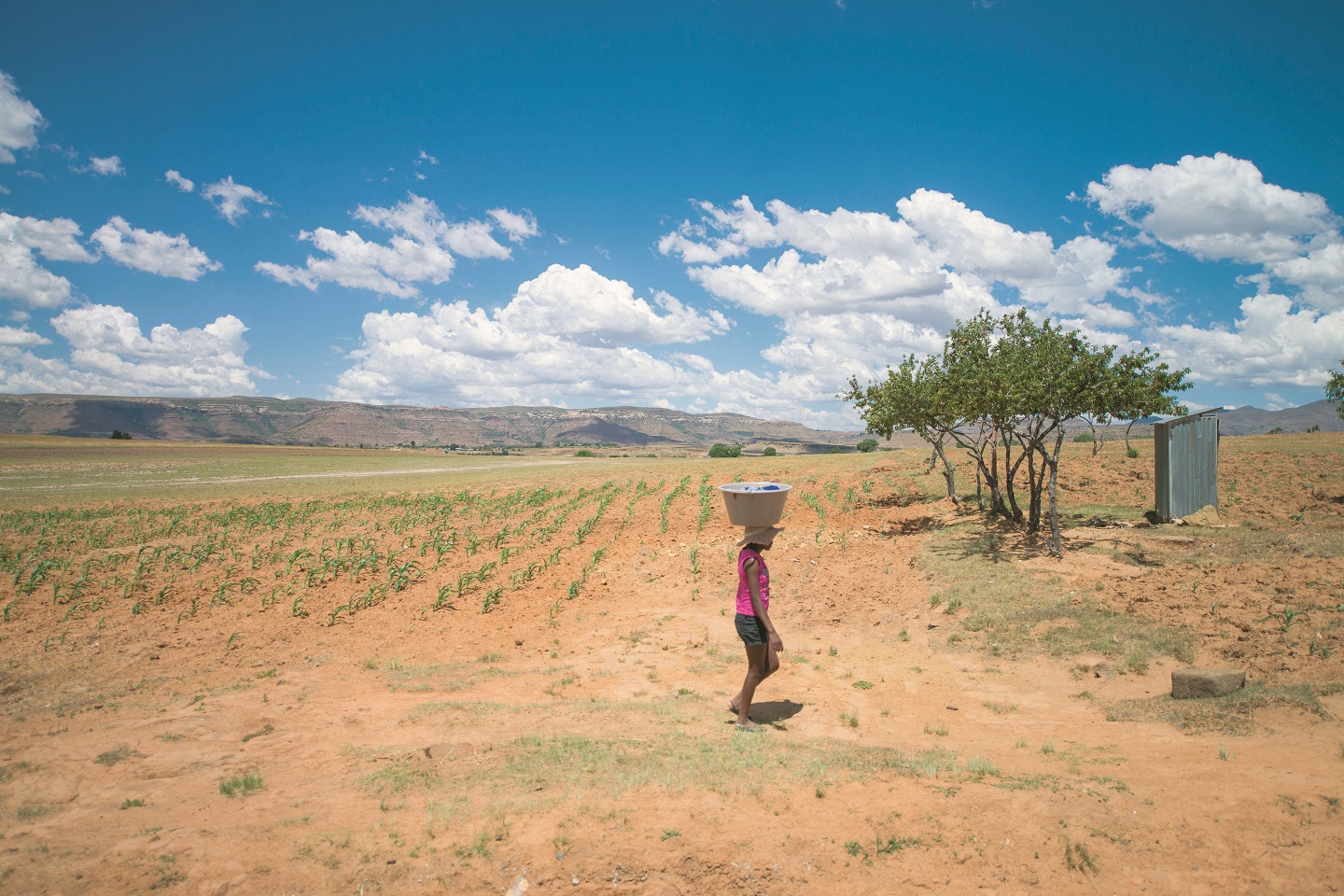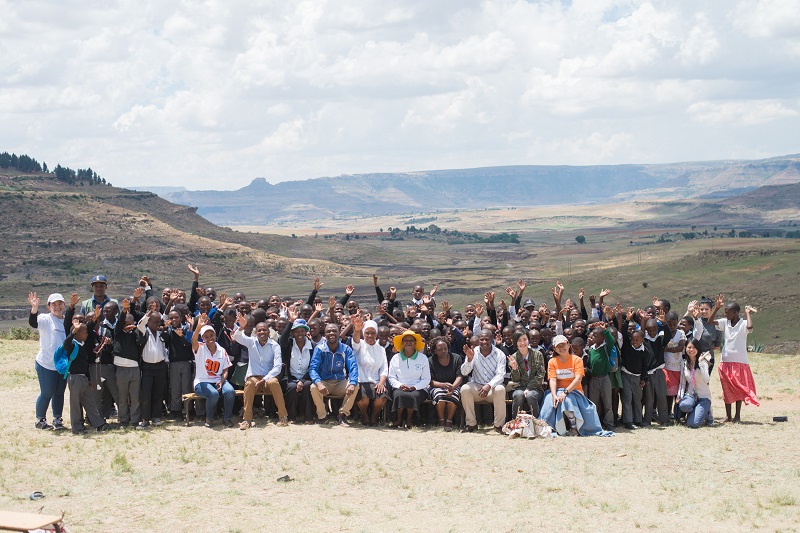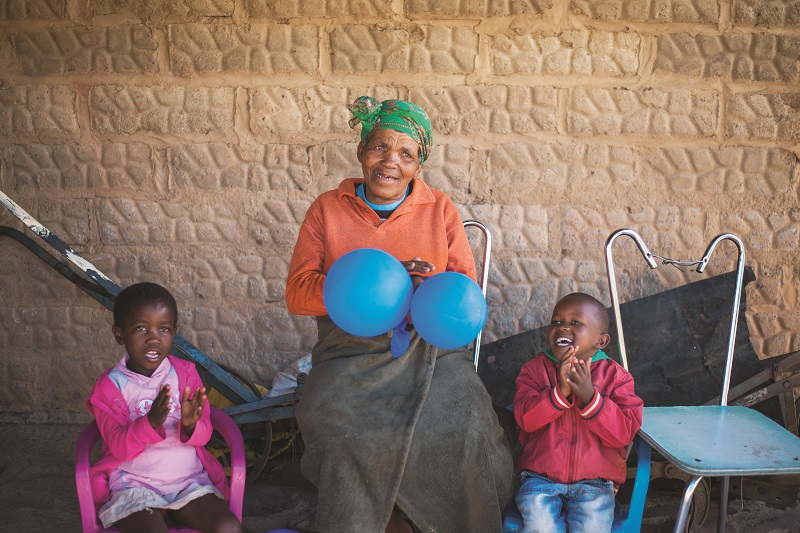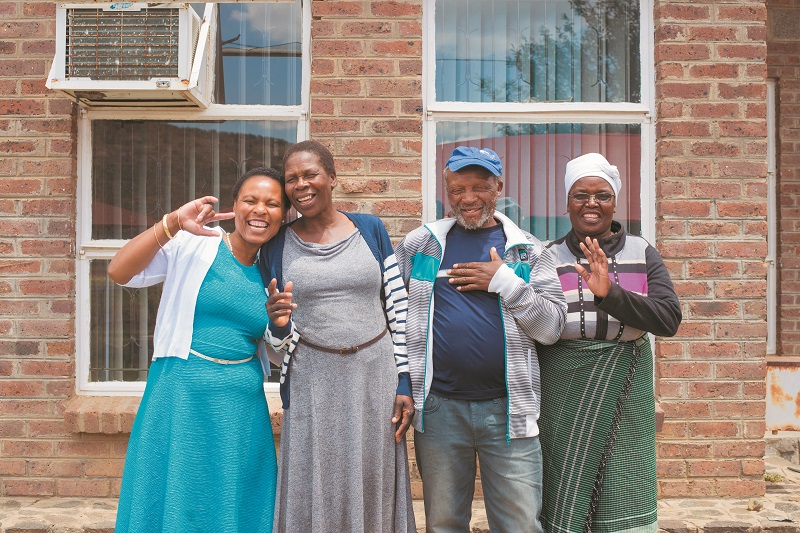
(Photo: Teh Jia Shyan/World Vision)
Climate change has repercussions and events like a drought can have dire consequences for the people of any country — more so if the nation’s communities depend on agriculture for their livelihood. This is the predicament faced by the people of Lesotho who have been experiencing a severe drought since 2015, caused by one of the strongest El Niño weather patterns in history.
Without aid and assistance, conditions in Lesotho, which is landlocked by South Africa, will continue to deteriorate. We get our first glimpse of the visible effects when our flight descends on the capital, Maseru. The mountainous landscape is predominantly brown with very few patches of green and hardly any bodies of water in sight.
The Matelile Area Programme
The Matelile Area Programme was established in 2012 in the Mafetang district, a rural area in the south of the country. It is one of 14 area programmes operating in Lesotho, funded by World Vision Malaysia. The initiatives under the programme fall squarely within the objectives of the humanitarian organisation — to help the underprivileged help themselves by working together to build a sustainable future for their children, families and communities.
Driven in a 4X4 vehicle, we pass villagers wearing multi-coloured balaclavas on horseback or riding donkeys who wave at us as we pass them on the sharp bends. Even in times of severe drought, the country — called the Mountain Kingdom or Kingdom in the Sky — boasts stunning landscapes. One can only imagine the different vistas just a few years ago — a land covered in lush greenery with flowing rivers and streams.

As we navigate the dusty roads, we notice how malnourished the animals look. There is little or no grazing land in most areas due to the dry season. In addition, low crop production, meagre harvests and poor rangelands for livestock rearing and grazing are grave issues here. The Mafeteng district has experienced a 21% decrease in maize yield and 15% in sorghum since it became drought-stricken. Considering that the staple meal is porridge or the polenta-like pap (sometimes vegetables are added but this is a luxury for most) — both made from maize — this is definitely cause for concern.
Children first
Child protection is the core of World Vision International’s goals and the focus on child-related issues is more important than ever for the Matelile Area Programme, where more than half of the beneficiaries — 13,969 out of 23,676 — are children.
Households headed by children are worryingly common in Lesotho, which is rated second in the world in HIV and AIDS cases. According to the 2014 Lesotho Demographic Health Survey, HIV prevalence has increased from 23% to 25% (from 2004 to 2009) and the prevalence of HIV in the Mafetang district exceeds the national average.
With the prospects for agriculture in serious decline, many parents may choose or be forced to leave the country in search of work, often in neighbouring South Africa. In this situation, children who are left to fend for themselves often turn to relatives and neighbours for help. Whatever little they have is usually shared among them.
One example is seven-year-old Qenehelo, who lives with her grandmother. Both her parents have died. They rely on the produce from their keyhole garden for food but this often means only one meal a day and sometimes nothing at all. Qenehelo helps where she can, fetching water with plastic containers from a nearby river that is almost dried up. We ask if the water is heavy as she has to walk a long distance to get there but she does not see it as a chore and makes almost daily trips.
Friendly and chatty, five-year-old Moseme also lives with his grandmother. He tells us he is eager to begin school — with a childlike wonder that is typical for a boy his age — and proudly shows us his colourful school bag. While there are a number of schools located within the Matelile Area Programme, the lack of proper roads and transport creates a huge challenge. The grandmother also worries as recent visits to the health centre have revealed that Moseme is underweight. Malnutrition is a serious health problem and one of the main causes of under-five mortality, with one in 10 children under the age of five being underweight.

Community involvement
One of the defining characteristics of the people of Lesotho is their determination and strong sense of community. At 68 years old, Motlatsi is an active volunteer. He tells us that he learnt about World Vision Lesotho through his community chief and public gatherings organised to raise awareness of the organisation’s work. “I see the importance of joining this organisation,” says Motlatsi, who works with vulnerable children in addition to leading the area programme’s greenhouse project.
His three-year journey with World Vision, while fulfilling, has not been without its challenges. The main one is keeping the community motivated despite the hard work and slow results. The team working on the greenhouse, for example, is now reduced to fewer than 10 members, a fraction of what it started out with. “We gradually try to convince them,” he smiles, as fellow volunteer, 58-year-old Maneo, adds, “When dealing with community members, you have to put your trust in God and not lose your temper. Sometimes it is difficult to change people’s minds.”
We also had the pleasure of meeting volunteers of all ages who make up the Community Care Collegiance as well as the Children Community. Essentially, the members of these groups connect locals with World Vision staff by first identifying the problems they face. Having caught a glimpse of their strength, one is bound to hope for improvement in Lesotho.
Matsolo, 27, tells us that she works with orphans, vulnerable children and the sick and homebound. Despite their own hardships, it is remarkable that they are passionate about helping their fellow Basotho in the hope of a better tomorrow, even if it means spending their own money when necessary. “World Vision has also provided us with sewing machines, which have come in very handy. We hope to improve our sewing skills so we can use them to earn a living,” Matsolo says.

Another volunteer, Leneheng, has been working with the community since she was in her teens. “Sometimes people are hesitant when I offer to help because of my age,” says the 20-year-old who is passionate about children and their right to education. But her age can be an advantage when dealing with the children whose fundamental rights she hopes to advocate for.
At the Thaba-tsoeu Health Centre, we meet Retsekisoang Mahao, chief of the 130-household Moholokoane Village. He is a tall, serious-looking man but when he smiles, it reaches his eyes. “I am happy to meet everyone here today and we are very thankful for all the assistance that has been rendered to us. Please convey our thanks to the people of your country,” says Mahao as he slowly removes his straw hat to address his audience.
Having spent the week interacting with community leaders and volunteers and experiencing the incredible hospitality of the World Vision Lesotho team, their overall sentiment rings loud and clear: For the children of Lesotho to have a better future in terms of health and education. It is no coincidence that it is perfectly aligned with the objectives of World Vision Malaysia.
While no one can tell for certain how long the drought will last, and even if it rains the adverse effects may still linger. But if there is one thing I have learnt from my time spent in Lesotho, it is that the people will wear the effects of this climate catastrophe like the battle scars of the nation’s journey to recovery. Until that moment arrives, the people of Lesotho — hopeful and highly motivated — would certainly benefit from a helping hand extended by the world community.
In adherence to World Vision Malaysia’s guidelines on child safety, we are not at liberty to reveal the exact locations of the sponsored children and schools we visited. This article first appeared on Mar 26, 2018 in The Edge Malaysia. Read the full story by subcribing to our digital copy.


